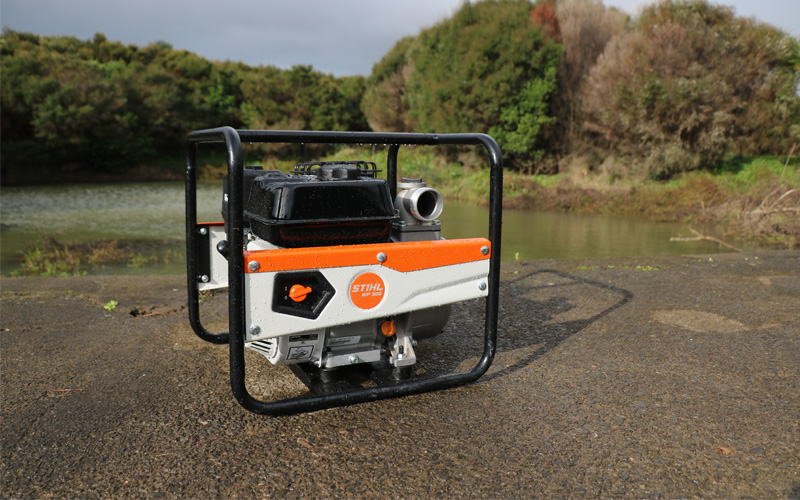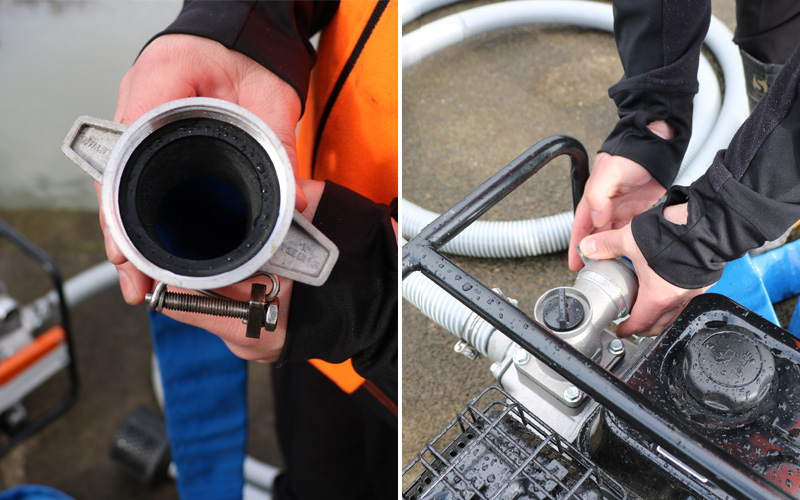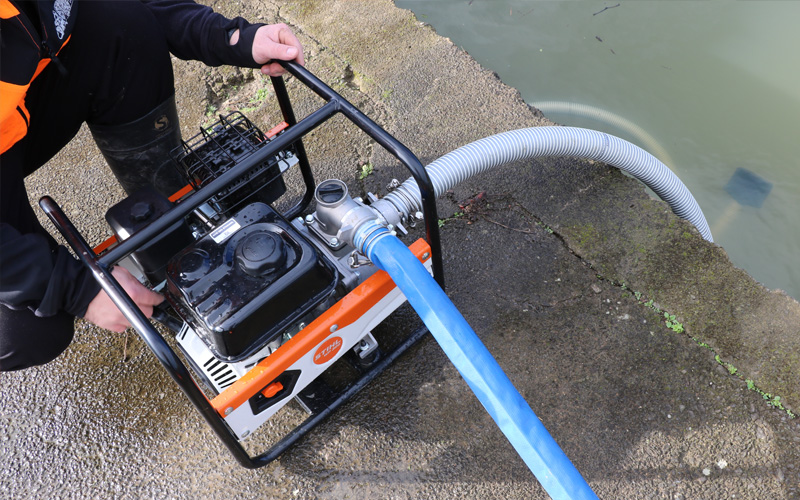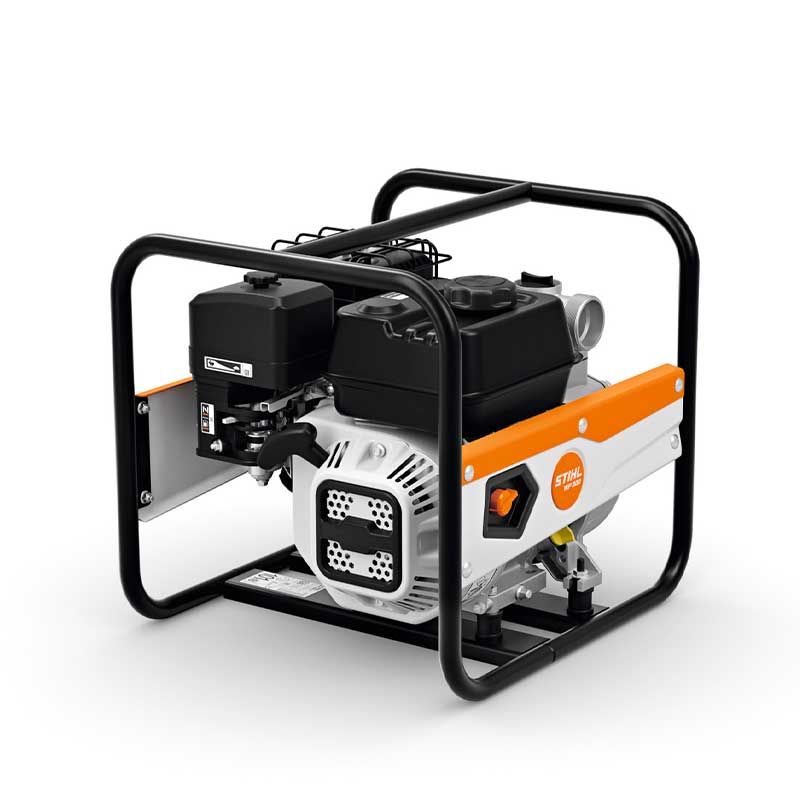STIHL WP 300 Petrol Water Pump


The STIHL WP 300 petrol water pump efficiently transports water, making it ideal for agricultural use - transport water from lakes, rivers, ditches, or ponds. We go behind the scenes of setting up and running the STIHL WP 300 petrol water pump with Ross, the technical guru at STIHL HQ. He's your ultimate go-to guy for technical and insider knowledge on all STIHL tools. This is about to get very technical...
THE SET UP
CHECK YOUR OIL LEVELS
Ross: Before starting your WP 300 petrol water pump, ensure the oil level is correct. The WP 300 petrol water pump has an oil level sensor; the engine automatically shuts off when the oil level falls below the required threshold to prevent damage. If the machine keeps cutting out, double-check your oil level by inspecting the orange dipstick at the bottom of the motor and ensure there is enough fuel in the fuel tank.

SUCTION HOSE AND CONNECTIONS
Ross: Next, the suction hose. Inside the coupling, make sure the rubber O-ring is present, and when connecting it to the pump, ensure there is no air gap. Connect the coupling and suction hose to the side of the pump, and make sure it's tight and secure. There should be no loose connections as that could result in the pump drawing air instead of water, which will hinder water suction.

SUBMERGE THE SUCTION HOSE IN THE WATER
Ross: Place the suction hose in the water, make sure the sieve is submerged but still floating and avoid submerging it in mud. If needed, you can add weight to keep it properly submerged.

ADD WATER TO YOUR WATER PUMP
Ross: Then, open the top of the pump and fill it with water. Running these pumps without water inside can cause damage to the seals and your water pump will not work.

START YOUR STIHL WP 300 WATER PUMP
Ross: Put your outlet pipe wherever you need it to go, start your pump and you should get a good water flow as long as you don't have any air gaps.
The STIHL WP 300 petrol water pump incorporates a suction basket that safeguards against dirt particles during water intake. It can effectively handle particle sizes of up to 6mm, minimizing the risk of the pump clogging and ensuring uninterrupted operation.
ROBUST FRAME
The sturdy frame provides excellent stability on different surfaces and protects the engine against accidental impact and damage. Additionally, the frame's design makes it easy to lift & carry.

ANTIVIBARTION SYSTEM (AV SYSTEM)
Ross: The engine is mounted onto rubber mounts on the frame. That's to try and help with the vibration going from the machine onto the ground.
To prevent excessive vibration and potential damage to the pump during operation, the engine is strategically mounted on rubber vibration dampers on both the motor and pump housing. These dampers effectively absorb vibrations transmitted from the machine to the ground and minimize mechanical stresses. As a result, the system ensures smooth running and maintains optimal performance, even at high engine speeds.
FINAL THOUGHTS AND ADVICE
Ross: DON'T TOUCH THE MUFFLER. If you're winding up your hoses when you finish, don't sit them on top of your muffler either, they will melt. When the machine is not in use you should turn your fuel tap off at all times so you don't end up flooding your fuel system.
SPECIFICATIONS
-
- Weight (kg): 26
- Power source: Petrol
- Engine Power (kW): 4.4
- Engine: STIHL EHC 605
- STIHL Engine Type: 4-Stroke
- Displacement (cc): 212
- Pump Ports: 2 inch
- Self-Priming Pump
- Max. Suction Height (m): 7
- Max. Pumping Height (m): 31
- Max. Flow Rate m³/h: 37



